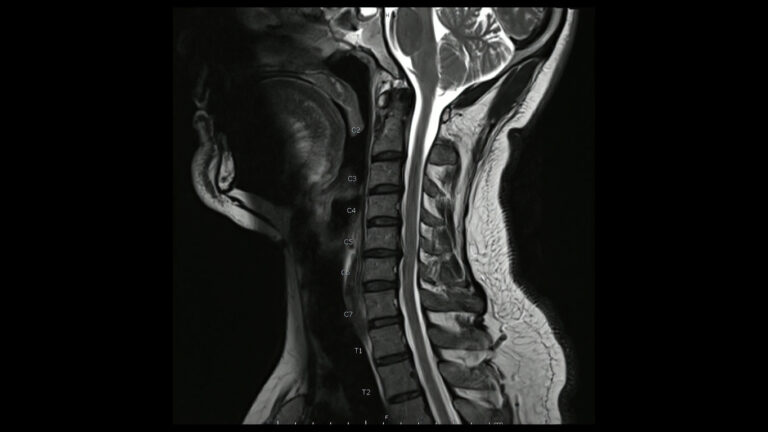Chiropractor or Physical Therapist: Which One Do You Need?

To get started, let’s answer this question: Chiropractor or physical therapist: which one do you need?
The easiest way to find out whether you need a chiropractor or a physical therapist is to know the primary focus of each. Chiropractors use more of a hands-on approach to heal musculoskeletal and joint problems. Physical therapists focus a little bit more on exercises to strengthen and heal muscles.
Since joints and muscles work in tandem, there is no small amount of overlap between the two professions, but that’s a broad view of it. Joint problem? Head to a chiropractor. Muscle issues? A physical therapist is best. Both? Or not sure? You’re probably better off seeing a chiropractor, who can then recommend a specialist if need be.
What Is Physical Therapy?
Physical therapy, also known as physiotherapy, is a type of medical care that works to treat the patient using techniques that build on one another as mobility increases. Therapies will often begin by restoring range of motion and flexibility and then develop strength as care progresses. Some facilities will have additional services as per their specializations and individual resources.
Physical therapy is often associated with recovering after an injury. Athletic endeavors, car accidents, faulty staircases, and dozens of other life encounters may be the reason for the injury. If an incident is traumatic enough, surgery may be required prior to the start of physical therapy. Physical therapy seeks to restore mobility and function, usually focusing on one or two parts of the body.
Earning a Doctorate of Physical Therapy takes about 7 years. Therapists may choose specializations based on interest and availability. Candidates must pass the National Physical Therapy Exam conducted by the Federation of the State Boards of Physical Therapy. Licensing is handled in the state in which the care will be administered.
Note: Physical therapy and rehabilitation therapy will often be used interchangeably. While the terms are quite similar, it is helpful to note which is meant within the context of any text. Here the terms ‘physical therapy’ will be used to discuss the field of study of physical therapy. The term rehabilitative therapy (or rehabilitative physical therapy) notes care that is designed to use physical therapy practices for the benefit of patients.
What Is Chiropractic Care?
The process of healing is accomplished through the use of chiropractic adjustments and specialized treatments as needed per a patient’s needs. Decompression, ultrasound, muscle stimulation, exercise instruction, and the inclusion of nutrients may be included in the care of clients.
Neuromuscular system retraining works to help the brain to properly recognize signals that are sent throughout the body, minimizing incorrect pain transmission signals. After an injury has healed, sometimes the body will still think that it needs to communicate pain signals. Chronic pain sufferers may welcome care that offers a way to minimize the pain that should have long since ceased.
The field of chiropractic works not only on the spine but also brings a holistic approach to medical care that incorporates other ailments that patients may experience. Other ailments include asthma, arthritis, fibromyalgia, migraines, and dozens more. Chiropractic patients find that caring for the unseen parts of the body helps ailments that may have prominence in their daily lives. Chiropractic also addresses degenerative and inflammatory pain conditions.
Chiropractic care often includes tasks that are similar to physical therapy. Mobility, strength and safe, healthy movements are on the list for both types of care. Chiropractic takes a more ‘whole-body’ approach and seeks to get at any underlying causes that may have taken part in the reason for medical care.
Chiropractic treatments also work to minimize the risk of the development of chronic pain or re-injury. If an incident (car wreck, sports injury) is known to have caused an injury, the focus includes preventing chronic pain from developing as the injury itself heals. The primary goal here is to prevent pain from returning later. Chronic pain sufferers may be better served through chiropractic care.
Earning a Doctorate of Chiropractic usually takes 6 to 8 years depending on the exact manner of courses. Physicians may choose a specialization based on their own interests and local resources. Candidates must pass the National Board of Chiropractic Examiners requirements. Licensing is required in the individual state in which the candidate will conduct care.
The Difference Between a Chiropractor and a Physical Therapist
It’s one thing to know the difference logically between the two, but a whole other to know the difference physically. After all, it’s not often that you’re in pain and you’re able to specifically identify what’s causing the pain, down to the underlying issue. If you could do that, you would be half-way to fixing it yourself.
To many of us, joint pain and muscle pain are too similar for us to tell the difference, unless we’ve experienced it before. But there are ways of figuring out whether to visit a chiropractor or a physical therapist.
Listening to your body and knowing the signs for each type of pain is a great way to determine which medical professional to see. Physical therapists are primarily focused on restoring or improving movement as it relates to muscles. Chiropractors are focused on joint and spinal health, which can also improve movement among other benefits. Use the following guide to determine where your pain is originating.
- Muscle pain often goes away when at rest.
- Joint pain is persistent, whether you’re moving or not.
- Activity, like stretching and exercising, often provides temporary relief from muscle pain.
- Movement and activity can make joint pain worse.
- Muscle pain is often accompanied by muscle spasms.
- Joint pain is often accompanied by swelling of the affected area.
Chiropractor | Physical Therapist | |
Years of medical school |
|
|
Internship and residency |
|
|
Practice |
|
|
Status |
|
|
Surgery |
|
|
Treatment techniques used |
|
|
Specialization |
|
|
Treatment Philosophy
Chiropractors and physical therapists take different approaches as far as treating pain and other symptoms go. A chiropractor is mainly concerned with conditions that are associated with the nervous and musculoskeletal systems. He or she is also concerned with the effects of the conditions on the body.
The common conditions that a chiropractor treats are headaches, neck pain, back pain, and sciatica to mention a few. Doctors of chiropractic use hands-on procedures that comprise of examination, diagnosis, and treatment plan. Chiropractors use their diagnostic expertise to recommend rehabilitative and therapeutic tools, including spinal manipulation.
On the other hand, a physical therapist’s treatment philosophy involves evaluation, diagnosis, and provision of treatment to reinstate movement as well as function. This usually includes a range of motion, strength, and balance. A physical therapist would develop a personal rehabilitation program depending on the cause (disease, injury, aging, and environmental factors).
Education
Chiropractors must earn a Doctor of Chiropractic degree and a state license. A doctor of chiropractic programs normally takes six to eight years to complete. Chiropractic education consists of classroom work in anatomy, physiology, biology, and similar subjects. Students also get a controlled clinical training period, in which they train in spinal adjustment, spinal assessment, diagnosis, and techniques.
After graduation, some chiropractors complete postgraduate packages leading to additional credentials and certifications. These packages provide extra training in specialty areas, such as pediatrics and orthopedics. Others may choose to earn a master’s degree in a related topic, such as sports rehabilitation.
To be a qualified physical therapist, one has to earn a Doctorate of Physical Therapist. It involves a seven-year program. The program includes about three thousand five hundred instructional hours followed by four years of undergraduate and three years of physical therapy school. The students are also expected to complete a thirty-week internship. They are also supposed to excel in the National Physical Therapy Exam.
Clinical Expertise
Doctors of chiropractic are masters of spinal manipulation and adjustment, which includes joint adjustment and soft tissue mobilization. A chiropractor would use his or her knowledge of the nervous and musculoskeletal systems to devise exercise regiments and therapeutic modalities to treat the underlying problem, which can be back pain, neck pain, and so on.
A chiropractor would use facts to support his or her treatment plan, diagnosis of subluxations, and spinal adjustment. The education of a chiropractor also provides him or her with detailed knowledge of physical therapy techniques, neurology, radiology, and general medicine.
The specific disciplines that chiropractors are well-acquainted with include pediatrics, orthopedics, sports medicine, forensic sciences, radiology, occupational health, nutrition, neurology, internal disorders, and general rehab.
Physical therapists are masters of human movement as well as re-establishment of movement-related procedures. Their basis of knowledge also extends into general medicine and chiropractic care. A physical therapist’s treatment tools mainly involve manual therapy, soft and joint tissue mobilization, muscle coordination, sports performance, neurological rehabilitation, and cardiovascular rehabilitation.
A physical therapist would diagnose functional, musculoskeletal, and movement conditions. The specific disciplines that physical therapists can practice include clinical electrophysiology, pulmonary, cardiovascular, neurology, geriatrics, pediatrics, sports medicine, and orthopedics.
The main treatment difference between a chiropractor and a physical therapist is that a physical therapist empowers a patient to care for him or herself through a home exercise program. On the other hand, a chiropractor may also utilize home exercise for some treatment plans.
A Few Similarities of Chiropractors and Physical Therapists
Candidates in both fields of study may choose to include orthopedics, pediatrics, geriatrics, occupational, and other related matters in their work. A chiropractor can specialize in physical therapy, but a physical therapy candidate is not likely to have chiropractic as an option for specialization. Each is required to interact with continued learning after the degree of choice has been acquired.
Misconceptions have centered around the fact that chiropractic largely leaves out the need for medications. Physical therapy’s history has been more closely aligned with traditional medical practices. As a result, physical therapy may have greater associations with the use of medications in some locations. Yet, many physical therapists do seek to avoid the use of medications.
Chiropractic care will only seldom use medication. It is, rather, the knowledge of the body and the manners in which it is meant to function that is used to accomplish the process of healing. Much of the overlap that is found in physical therapy and chiropractic centers around such knowledge.
Techniques are similar due to the fact that both work to heal the same human body make-up. Knowledge and training are similar. Chiropractic tends to go just a bit further into the underlying causes and seeks to heal the body as a unit. Physical therapy often focuses more on individual portions of the body at any one particular time. However, both chiropractic and physical therapy practitioners may prefer to employ a holistic approach to the care they each provide.
Traction, ultrasound, stimulation, exercise instruction, and strength training are a few of the additional care options that may be offered at both types of centers. Each type of facility will likely require a series of visits for care to be complete. Multidisciplinary approaches will vary by location.
Should I See a Chiropractor or Physical Therapist for Back Pain?
Back pain may be caused by hundreds of actions! Pain may have originated with an injury or incident. Overuse or misuse of muscles is a big contender for causing pain along the spine. Patients must consider what will offer them the greatest level of care for this centralized portion of the body. The majority of movements originate here!
Back pain may begin in one of the following areas:
- Sacral (area connecting to the pelvis)
- Lumbar (lower back)
- Thoracic (upper back)
- Cervical (neck area, discussed further below)
Spinal decompression therapies are something to look for to alleviate upper and lower back pain. Decompression of the spine works to alleviate painful pressure between the vertebrae. This type of treatment may vary by physical therapy facilities but will nearly always be a part of chiropractic care for back pain.
Spinal manipulation may be done with some physical therapy facilities. A chiropractor will likely offer more direct care to the spine to promote natural healing in the body. Spinal manipulation works to realign portions of the spine naturally – without surgery.
The Alaska Back Pain Protocol is a combined therapy series that diminishes back pain working to eliminate pain altogether. This interwoven care plan includes rehabilitative therapy, chiropractic care, and the DRS System. The results are stunning!
What is the DRS System? The DRS System is an extremely effective, non-surgical form of disc decompression. It is marked as an alternative to back surgery that nullifies the need for recovery time because hospital stays are not necessary. Yes, it works!
Should I See a Chiropractor or Physical Therapist After for Neck Pain?
Much of the care needed for the neck will be directly related to the spinal vertebrae in some manner. Like back pain, neck pain may originate from hundreds of actions or movements. Posture and cervical spinal alignment (C3-C7) will have much to do with the sources of neck pain.
Pressure and pain in the neck area may also lead to headaches for some patients. The neck plays an important role in providing support for the head. A posture that does not allow the neck to remain properly aligned with the head can cause unnecessary pain. Some migraine sufferers may find great benefit in chiropractic care specifically for the cervical spine area (neck).
This modern world of fast-paced and intense work does not always lend well to the concept of caring for the neck properly. Neck pain sufferers may incur pain conditions from activities involved with normal life or workplace activities, or as the result of an impact injury. Once a condition has begun to develop, it may be further aggravated by even the smallest of activities.
As the body ages, conditions may intensify. Therefore, it is essential to seek proper medical assistance in a timely manner when pain conditions develop in any part of the spine. Care early in almost any type of injury will work to rapidly diminish the long-term effects of the condition.
A few of the conditions that lead to neck pain include:
- Whiplash
- Inflammatory arthritis
- Herniated discs
- Spinal discs showing degeneration
- Tech Neck
Nerves in the cervical spine will let a patient know when something is not quite right. Seemingly small tasks may quickly become sources of great frustration when neck pain develops. Nerves communicate information throughout the body; therefore, pain may radiate through other portions of the body.
A care provider must be equipped to recognize and safely care for these conditions in a manner relative to the rest of the body. The neck serves the body in a unique way as it works to unite the brain with the trunk and limbs. It is imperative that this portion of the body receives the collaborative care that may be best provided with chiropractic and rehabilitative services.
Should I See a Chiropractor or Physical Therapist for Sciatica?
Sciatica occurs when the sciatic nerve receives pressure from something else that is happening in the body. This nerve travels from the lower back down through the hip and into the foot. As the longest nerve in the body, the sciatic nerve has the ability to surprise pain sufferers with its sharp and shooting alerts of pain.
Sciatic pain is often generated from one of the following:
- Herniated discs
- Subluxations
- Degenerating discs
- Stenosis
- Lumbar disc bulge
- Piriformis syndrome
The effects of these conditions are best minimized – or even eliminated – through the combination of chiropractic care, rehabilitative care, and DRS treatments. The DRS System (as mentioned above) is a uniquely designed decompression therapy that alleviates pressure between the spinal vertebrae. Specific exercises and stretching techniques may be given by a physical therapist or chiropractor to help minimize sciatic pain.
Should I See a Chiropractor or Physical Therapist for Shoulder Pain?
Shoulder pain sufferers may find that chiropractic care offers far more than they expected. Having one shoulder become unbalanced from the rest of the body can cause misalignment issues in the neck and upper spine. Once one area becomes ‘out of whack,’ nearby joints will often try to compensate for the imbalance.
Over time, this can cause additional injuries that may have been preventable. Care for shoulder pain will usually include some rehabilitation therapy treatments to build strength – as well as chiropractic adjustments to restore alignment. The shoulder joint and adjoining muscles, tendons, and ligaments must be brought back into cooperation with the rest of the body for proper healing.
Should I See a Chiropractor or Physical Therapist After a Car Accident?
When the term ‘chiropractic’ comes to us in the same sentence as ‘car wreck’ the term ‘lawsuit’ is often included. Whether or not any lawyers have become a part of your experience, the choice will often depend on your needs for care. Once life-threatening injuries have been ruled out, then you can begin to decide between a chiropractor and a physical therapist.
As chiropractic care is slightly geared more toward healing the body as a unit, this may be preferable if multiple injuries have been incurred. Whiplash, back and neck pain and headache pain sufferers may find great benefit in the comprehensive treatment plans that some facilities will offer. Chiropractic services will likely include rehabilitative therapies and will vary based on the severity and origin of a specific patient’s condition.
If you suspect injury due to a car accident, it is best to get it checked out early. This will help with any insurance claims as well as a patient’s own long-term health. Seek a facility that is willing to cooperate with you and any insurance companies that may become involved.
A Growing Appreciation Between Physical Therapists and Chiropractors
If everyone always saw every matter the same, progress would soon slow in any field of study. As we have seen, physical therapy and chiropractic do have many overlapping pieces to their methods of care for patients. A growing sense of cooperation has begun to surface between the two fields of medicine.
This is a great benefit to patients under both kinds of care. Variances between these two fields may help provide the public with a natural form of progression through a continued sense of learning and advancement in the world of medicine. Advanced medical technologies continue to open doors for the health of patients looking for combined care options.
Physicians will sometimes choose a multidisciplinary approach to treating patients. Whether or not exact treatments lend more toward chiropractic care or physical therapy will sometimes depend on a patient’s specific needs, location, and interests. Both styles of care are meant to direct healing within injured and ailing parts of the body.
The two methods of practice are still just as widely different as they are similar. One thing that may be helpful to note is that chiropractic care may often include rehabilitative activities to restore and build strength. Physical therapy might not necessarily be inclined to include direct care centering on alignment on the body as a complete unit.
Specific methods and practices have continued to develop in both fields alongside one another as knowledge and technology have skyrocketed. Much about the skeletal system, muscles, tendons, and ligaments had been under review for many, many years by the time the medical community finally began to recognize the benefits of each. Appreciation for the two styles of care developed separately over time, creating two fields of study.
Chiropractic was a source of study long before its practices became widespread. Treatments have been in use since the late 1800s. While knowledge of the body’s mechanisms is not new to humans, the use of chiropractic care has recently begun to be magnified for its incredible benefits. The field of chiropractic began to gain steam in the late 1980s with the Sherman Antitrust Act.
Physical therapy had also been in use for some time prior to its health benefits were fully recognized. Methods were practiced in small pockets of the globe in the 1800s. Physical rehabilitation practices took on a wider span of usage when Polio began to take its rise in history in the early 1900s.
What is the Difference: Chiropractic Care and Physical Therapy?

What is Chiropractic Care?
Chiropractic care is all about the detection and correction of spinal subluxations in order to promote greater expression of life to run freely from the brain to the body. Chiropractors help remove interference to your nervous system so that you can live your life to your fullest potential.
Chiropractic care is a preventive method to health that focuses on wellness rather than disease. Doctors of chiropractic pay close attention to the central nervous system (CNS) that controls all facets of the body. The brain conveys messages through the spinal column across an enormous set-up of spinal nerves to deliver info to every cell, organ, and system of the body.
According to Gray’s Anatomy, the nervous system is the most complicated as well as highly organized of the various systems that make up the human body. The CNS consists of the brain along with the vertebrae. The peripheral nervous system entails a chain of nerves through which the CNS is connected with the various body tissues.
A subluxation of the vertebral column can impede the body’s normal function and health. In most cases, a subluxation is referred to as a misalignment. Chiropractic care insists that the body has the aptitude to heal itself and sustain good health if there are no subluxations in the spine. Therefore, a healthy nervous system corresponds to a healthy body.
Chiropractic care involves the use of hands-on spinal adjustments as the main tools. With that said, a vertebral adjustment is the use of a precise force to a precise part of the spinal column. The objective of an adjustment is to reestablish normal nerve transmission and help the body to get well on its own.
Chiropractic care insists on keeping optimum health, naturally, minus the use of surgery or drugs. Instead of treating the signs of disease, manipulative care helps the body to help itself by permitting the body to work at its optimal best. From children to the elderly, chiropractic care can relieve pain and help maintain good health by supporting the immune system.
What is Physical Therapy?
Physical therapy is a health profession whose primary objective is the promotion of optimal health and function. This objective is achieved through the application of scientific principles to the processes of examination, evaluation, diagnosis, prognosis, and intervention so as to remediate or prevent impairments, disabilities, and functional limitations.
Physical therapy incorporates an area of specialized competence and includes the development of new principles as well as applications to meet existing along with emerging health needs. Other professional activities that serve the purpose of physical therapy are administration, consultation, education, and research.
Physical therapists alleviate impairments and functional limitations by designing, implementing, and modifying therapeutic interventions. The most popular examples of interventions include functional training, therapeutic exercise, manual therapy techniques, patient-related instructions, and electrotherapeutic modalities.
A Cohesion of Chiropractic Care and Physical Therapy
American Physical Therapy Association (APTA) and the American Chiropractic Association (ACA) have in the past been to court to determine who can manually manipulate a patient’s spine to correct a misalignment. Physical therapists use manual manipulations, and insurance firms reimburse them for their services.
The scope of practice of chiropractic and physical therapy requires clarification to determine the principles of this specific issue.
According to research, physical therapists may use manipulation techniques if they use a non-specific force and no momentum to correct spinal misalignments. This means that physical therapists cannot use any type of momentum when manipulating a patient simply because forceful manipulation is a chiropractic service.
Chiropractors believe that the realignment of the spine contributes to the health and wellness of the patient. Chiropractic physical therapy uses manipulation to alleviate pain, but physical therapy does not focus on how the spine controls the body and allows the body to naturally heal itself.
The difference in their practices (chiropractors and physical therapists) is determined by their education. Physical therapists, although trained in treating the spine, they are educated in treating the soft tissue and joint manipulation techniques, and not the manipulation of the vertebrae.
Chiropractor or Physical Therapist: Where to Land?
If you have access to a facility that can offer both methods of care – like our Better Health Chiropractic clinic! Due to the nature of training that both fields may encounter, chiropractors are more likely to take on the additional skills of physical rehabilitation therapies than the reverse. Therefore, you’re generally better off seeing a chiropractor who can do physical therapy type procedures.
One additional benefit of seeing a chiropractor is that a referral is not generally required. Physical therapy will sometimes require a referral. You may wish to combine treatments and receive both types of medical care to further increase care.
Do I Have to Know in Advance What Type of Care I Will Want?
Imagine combining all of these resources into one facility, one place for chiropractic and physical rehabilitation therapy needs. A single facility that can help you with insurance paperwork – and the need for insurance in the first place! The need for care may be the result of an acute or chronic injury, degenerative in nature, or not yet understood by a pain sufferer.
Better Health Chiropractic and Physical Rehab offers this type of comprehensive care to their patients. Treatments are a combined team-oriented option that brings together the elements of chiropractic care, massage therapy, and physical rehabilitative therapy for uniquely formulated results. Care for all ages is available through Better Health.
You do not have to know in advance which type of care will most benefit you. Let the professionals help you decide. Getting well does not have to be cumbersome. Better Health offers care plans that include chiropractic and physical therapy techniques, practices, and equipment. No need to decide chiropractor or physical therapist – you can opt to have both practices in one location!
Call 1.877.346.5255 today to learn more about comprehensive chiropractic and physical rehabilitative therapy plans in Alaska. Better Health Chiropractic seeks to provide the best possible care options for patients. Therefore, we offer more than just one type of treatment.
In Conclusion
Physical therapy has a record of extensive benefit for a wide range of conditions, whereas chiropractic care addresses the health and function of the spinal column. Physical therapy and chiropractic interventions are possibly very compatible in integrative treatment for musculoskeletal conditions.
Both professions share the goal of empowering patients through coaching and self-care and have a commitment to patient exercise, education, and rehabilitation. The safety, as well as, the popularity of chiropractic and its effectiveness for specific conditions make it a powerful choice in healthcare options.
Schedule an Appointment and Receive
FREE One-Hour Massage Certificate
That’s right! Receive a certificate for a free one-hour massage with our highly-trained and licensed massage therapists for use after your first appointment. Use it yourself, or give it to a friend.

Dr. Brent Wells, D.C.
About the Author
Dr. Brent Wells has been a trusted chiropractor since moving his family from Oregon to Alaska back in 1998 and founded Better Health Chiropractic & Physical Rehab – B.S. from Univ. of Nevada, Doctorate from Western States Chiropractic College, volunteer for Reflex Sympathetic Dystrophy Foundation, and member of the American Chiropractic Association. As a chiropractor his focus is on family, including his 3 children and wife of 20+ years, his clinics, and ongoing education.
Related Posts
Featured Posts
9 Key Differences Between a Herniated Disc and a Pinched Nerve
7 Self-Care Tips for Cervical Radiculopathy
Chiropractic Treatment Techniques for Degenerative Disc Disease
How to Treat Burning Knee Pain Naturally?
Bulging C5-C6 Disc Symptoms: More Than Just Neck Pain
Beneficial Effects of Walking on Sciatica
NEWSLETTER SIGN-UP
Sign up now!
Better Health Anchorage
- 8840 Old Seward Hwy E, Anchorage, Alaska 99515
- Phone: 907-346-5255
- Open Hours: 9AM to 7PM













